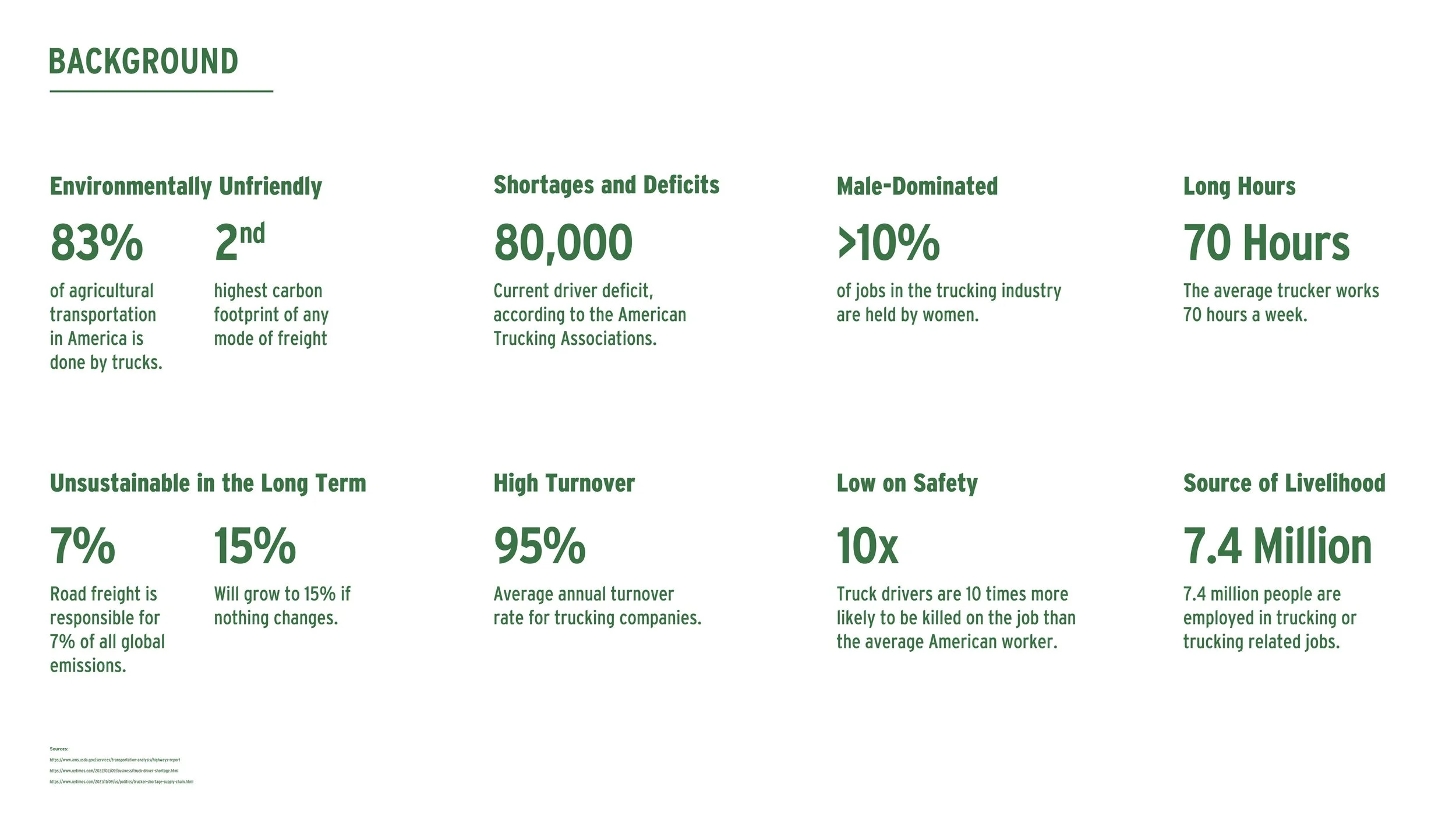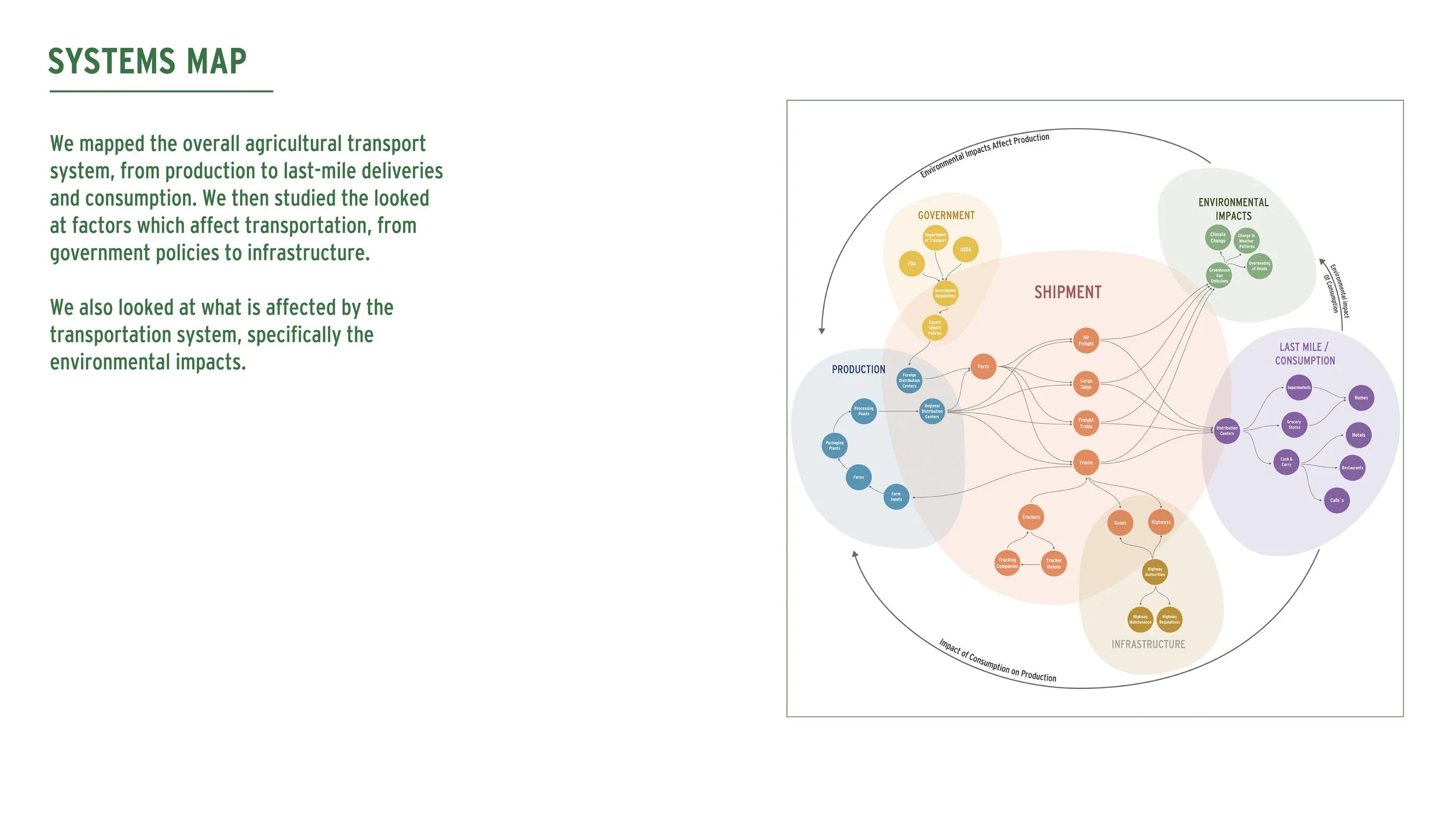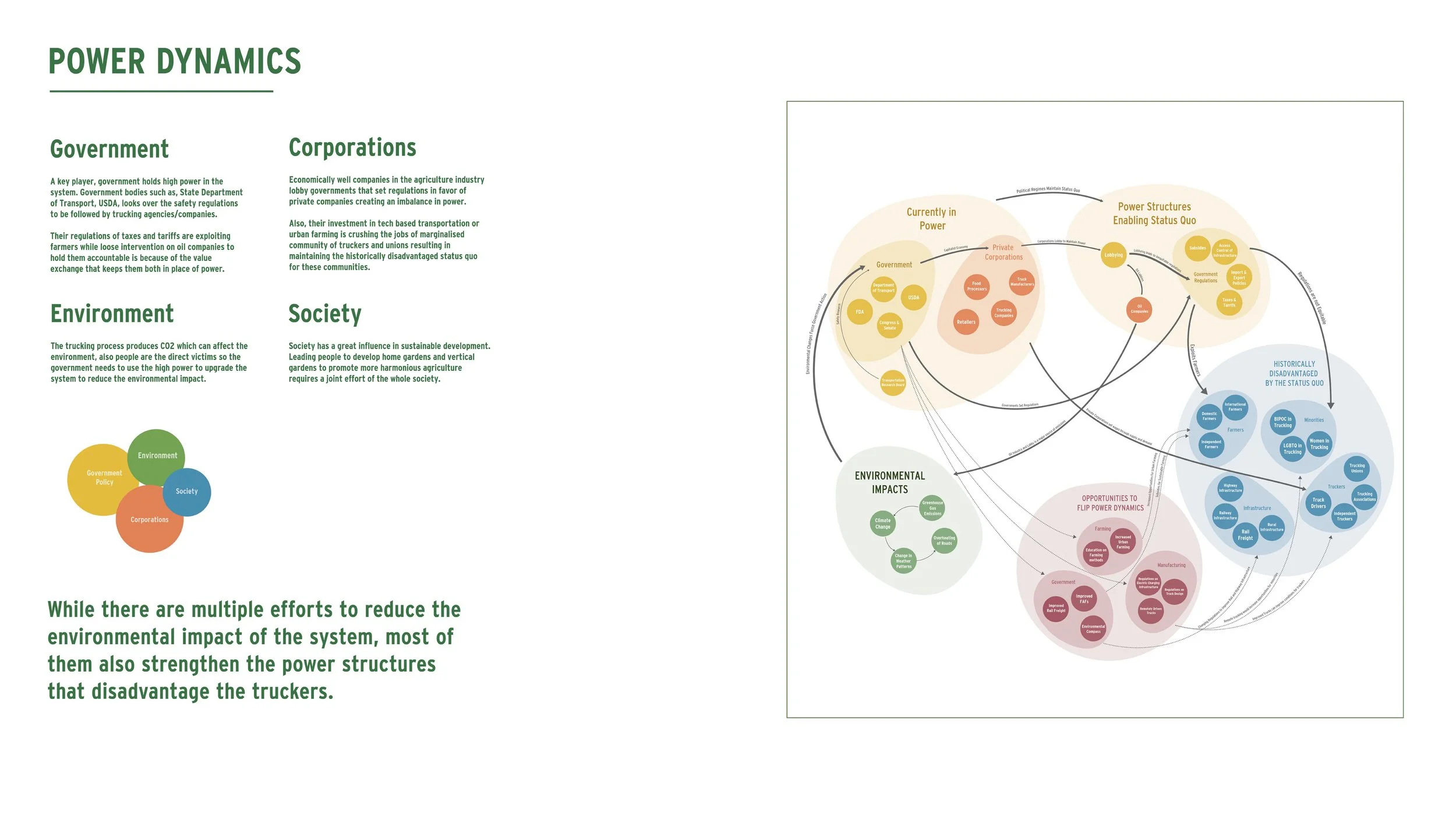Agricultural Trucking in America
Creating a roadmap for a more sustainable + equitable future
2022
Systems Design
About
83% of agricultural transportation in America is done by trucks. But it’s also an industry known for long hours, high turnover and low safety. It’s also responsible for 7% of global emissions, a number that’s expected to grow to 15% in the coming years. Any change to make the industry more sustainable is also likely to affect the livelihood of 7.4 Million people.
This project was part of the Spring 2022 Systems and Systems Theory class taught by Weslynne Ashton and Cheryl Dahle at the Institute of Design. as part of a team with Claire Xu, Disha Rathor and Jerick Evans. We analyzed one component of the larger food delivery system, mapping the players and dynamics within the system, and looking at the impact different interventions would have on the system.
Systems Mapping
We mapped the overall agricultural transport system, from production to last-mile deliveries and consumption. We then studied the looked at factors which affect transportation, from government policies to infrastructure. We also looked at what is affected by the transportation system, specifically the environmental impacts.
The overall food transportation systems map gave us a wide eye of the interactions and values at play through multiple modes of freight. Since a large portion of this transportation is carried out by trucks, we set our boundaries at diving to understand transportation of agricultural produce through trucking in North America.
We then took a look at the power dynamics within the system, specifically, those in power, those that were historically disadvantaged by the system, and the structures that keep this dynamic in place. This helped us identify key tensions within the system, as well as opportunities to flip the power dynamics.
Barrier to Change:
While there are multiple efforts to reduce the environmental impact of the system, most of them also strengthen the power structures that disadvantage the truckers.
Any systems change will need to balance the need for sustainable transportation with the future livelihood of 7.4 Million people.
Roadmap
In order to facilitate a better system, a large number of changes would have to be made at a niche level, before they can have an impact at the regime and systems level.
Looking at the ideal leverage points within the system, we came up with a series of changes, and then presented them as a roadmap for the future of the industry.
Ideal System
With a focus on urban farming, and locally + sourced produce delivered by electrical trucks, the system is more sustainable.
More Sustainable
More Equitable
+
Transitioning from long-haul trucking to remote trucking opens up job opportunities for those that wouldn’t otherwise have been able to make a career in trucking.






